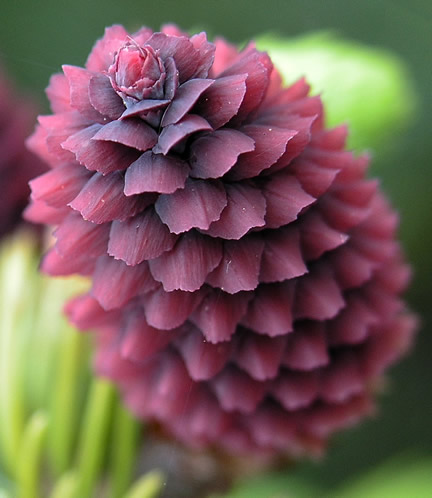| General Description | Large conical evergreen tree with perfect flowers. This tree often thrives in light, sandy soils. The leaves are light to dark green in colour. |
| ID Characteristic | This is a very large tree that is fast growing. It is monoecious, which is also another defining characteristic. |
| Shape | Conical in youth, cylindrical and irregular shape with age; it can grow, at a quick rate, up to 40 m. |
| Landscape | This is a good plant to utilize as a windbreak and also to enhance interest in the garden with its broad spread. |
| Propagation | Stratification of the seed can ease the germination process. The stratified seeds should be sown in autumn and placed in a cold frame. When stored, the seeds should not be allowed to dry and should be kept cold. |
| Cultivation | Sow seed in containers in a coldframe in autumn or spring. Cold stratification may improve germination if seed is planted in the spring. Grow in deep moist but well-drained, neutral to acidic soil in full sun. For maximum freshness, keep seed refrigerated in its original packaging until it is time to plant. |
| Pests | There are no major pests specific to this tree. |
| Habitat | Central and Western China. |
| Bark/Stem Description | The bark is grey or grey-brown, longitudinally fissured into thick, square plates or irregularly flaking. |
| Flower/Leaf Bud Description | Scaled buds that are purplish in colour. Apical buds are also much larger than the terminal buds. |
| Leaf Description | Leaves directed forward and closely appressed on upper side of branchlets, spreading and almost pectinate on lower side; linear, slightly curved or straight, flattened; 10–25 mm long and 1-1.5 mm thick; slightly keeled on both sides. |
| Flower Description | This tree holds a perfect flower that is very small, and utilizes wind pollination. The flowers begin to appear during the month of April. |
| Fruit Description | Cones are green to reddish brown, maturing to dull or purplish brown; ovoid to oblong in shape; 6–12 cm long and 3–4 cm wide. |
| Colour Description | This tree has light to dark green needles with a waxy coating. The cones are purplish in colour and the bark is greyish brown. |
| Texture Description | This tree is sharp and very hard giving a unique interest to the landscape. |
